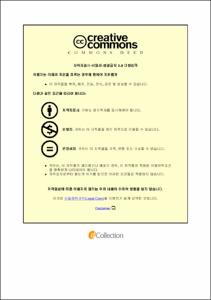부산지역 고등학교 급식 조리종사자의 위생교육현황과 위생지식
- Abstract
- This study was conducted to evaluate the status of hygiene education and hygiene knowledge of high school foodservice employees in Busan area and we provide the base data for the systermatical efficient hygiene education.
As the method of this study, 186 questionnaires prepared using the questionnaire method were distributed to foodservice employees of the five high school in Busan area and 178 questionnaires were returned(the return rate at 95.7%). 175 questionnaires excluding those with insincere answers were used as the final statistical data. SPSS ver 18.0 was used for data processing. The survey period was from December 1, 2014 to December 26, 2014. This study results are as follows.
1. In current situation of hygiene education, ‘verbal education’ and ‘materials distribution’ occupied 97.1%. The proportion of those who have hygiene education experience by domain was personal hygiene (94%), food storage (98%), process control (98.5%), environment hygiene (98.0%), utensils and tools (98.6%) and food-borne disease and food microorganism (94.7%). As for the reasons for inability to practice hygiene education knowledge, habitual practice (38.9%) and follower of a business (36.0%) were most frequent. In reeducation after hygiene education, ‘always’ showed highest response with 80.0%.
2. The overall satisfaction, importance and application score of hygiene education among cooking employees was 4.20, 4.67 and 3.89, respectively. In degree of practice of hygiene education, a significant difference according to the working time was observed (p<0.001). As for reeducation, ‘always’ (3.96/5.00) was significantly higher than ‘case by case’(3.60/5.00) (p<0.05).
3. The overall hygiene knowledge score of the cooking employees was 83/100. By domains, average score of environment hygiene was 4.74/5.00, food-borne disease and food microorganism was 4.37/5.00, food storage was 4.26/5.00, utensils and tools was 4.00/5.00, working process was 3.98/5.00 and hygiene knowledge was 3.58/5.00. By items in hygiene knowledge, ‘knives, rubber gloves, and containers used for raw vegetables before disinfection are not required to be distinguished from those used for raw vegetables after disinfection’ (4.94/5.00) showed highest score and ‘frozen squids should be thawed within four hours in cold water or within 72 hours in a refrigerator.’ (1.60/5.00) showed lowest score.
4. In hygiene knowledge scores according to nutritionists provide reeducation after hygiene education, the hygiene knowledge score of ‘utensils and tools’ was significantly higher for ‘always’ (4.12/5.00) than ‘case by case’ (3.57/5.00) (p<0.05).
5. Hygiene education satisfaction and personal hygiene knowledge score showed a positive correlation (p<0.01). Hygiene education importance showed a positive correlation with personal hygiene knowledge score (p<0.05) and negative correlation with food-borne disease and food microorganism (p<0.05). The degree of practice of hygiene education and Utensils and tools showed a positive correlation (p<0.05). Satisfaction of hygiene education showed a positive correlation with importance of hygiene education as well as degree of practice (p<0.01), while importance of hygiene education showed a positive correlation with degree of practice (p<0.05).
To sum up, to increase the hygiene knowledge level and degree of practice of education among cooking employees, managers should make efforts to increase the effects of education through diverse approaches using media, rather than verbal hygiene education. Moreover, establishment of recognition of the importance of hygiene education will be necessary. After training, continuous monitoring and feedback regarding the understanding about the education material and actual application should be provided. Concerning insufficient parts, reeducation must be followed frequently.
- Issued Date
- 2015
- Awarded Date
- 2015. 8
- Type
- Dissertation
- Publisher
- 부경대학교 교육대학원
- Affiliation
- 영양교육전공
- Department
- 교육대학원 영양교육전공
- Advisor
- 류은순
- Table Of Contents
- Abstract
Ⅰ. 서론
1. 서언 1
2. 연구의 목적 3
Ⅱ. 이론적 배경
1. 학교급식 위생관리 4
2. 학교급식 조리종사자 위생교육 현황 5
가. 학교급식 조리종사자 위생교육의 중요성 5
나. 학교급식 위생교육의 현황 7
3. 학교급식 조리종사자의 위생관리 수행현황 9
가. 학교급식 조리종사자 위생지식 9
나. 학교급식 조리종사자 위생수행도 11
Ⅲ. 연구방법
1. 연구대상 및 기간 13
2. 연구방법 13
3. 연구내용 14
4. 자료분석 16
Ⅳ. 연구결과
1. 조리종사자의 일반적 특성 17
2. 위생교육 현황 19
가. 조리종사자의 위생교육 형태 19
나. 조리종사자의 위생교육내용 경험 24
3. 조사대상자의 위생교육에 대한 만족도, 중요도, 실천도 27
가. 조리종사자의 위생교육 만족도, 중요도, 실천도 전체 점수 27
나. 인구학적 특성에 따른 위생교육 만족도, 중요도, 실천도 30
다. 직무특성에 따른 위생교육 만족도, 중요도, 실천도 32
라. 근무특성에 따른 위생교육 만족도, 중요도, 실천도 34
마. 위생교육 후 영양사의 재교육에 따른 위생교육의 만족도,
중요도, 실천도 36
4. 조리종사자의 위생지식 38
가. 위생지식 전체 점수 38
나. 항목별 위생지식 점수 40
다. 조리종사자의 일반적 특성에 따른 위생지식 점수 43
1) 인구학적 특성에 따른 위생지식 점수 43
2) 직무특성에 따른 위생지식 점수 46
3) 근무특성에 따른 위생지식 점수 49
라. 위생교육 후 영양사의 재교육에 따른 위생지식 점수 53
5. 위생교육의 만족도, 중요도, 실천도와 위생지식 간의 상관관계 56
6. 위생교육의 만족도, 중요도, 실천도 간의 상관관계 58
Ⅴ. 요약 및 결론 60
Ⅵ. 참고문헌 63
부록 71
- Degree
- Master
- Files in This Item:
-
-
Download
 부산지역 고등학교 급식 조리종사자의 위생교육현황과 위생지식.pdf
기타 데이터 / 970.52 kB / Adobe PDF
부산지역 고등학교 급식 조리종사자의 위생교육현황과 위생지식.pdf
기타 데이터 / 970.52 kB / Adobe PDF
-
Items in Repository are protected by copyright, with all rights reserved, unless otherwise indicated.